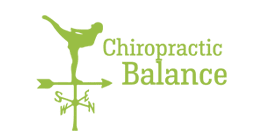I first started yoga back in 2004 whilst still living and working as a ballet dancer in Germany. I was drawn to the warm environment that was in contrast to the cold ballet studios and stage rehearsals I frequented. I also appreciated the opportunity to holistically investigate the connections between the health of my mind and the performance of my physical body. Fast forward many years later when I was back living and working in Sydney burning myself out from an unsustainably busy lifestyle. I attended a yoga retreat in Bali and afterwards discovered a place and way to continue a more balanced way of living through attending classes at the well-known Power Living Yoga Studios. Fast forward again to last year, having just relocated to Wellington to commence work with Chiropractic Balance, I was thrilled to learn that Power Living had recently opened a Wellington studio.
There are many great places to practice yoga in the Wellington region as well as an additional variety of online courses to follow from the comfort of your own home. But the reason I can’t rave enough about Power Living Yoga New Zealand is because of the wonderful community they are creating through the classes, courses and events they offer, as well the shared philosophy we have about the workings of the human mind and body.
The ancient principles of yoga recognise that optimal alignment of the body creates maximum energy. At Chiropractic Balance we understand that maximum energy to be the optimal functioning of your nervous system. We work with the ideal alignment and movement of your joints to ensure correct stimulation and feedback from your body to your brain so that your nervous system can be working at its best. Duncan Peak, founder of Power Living Yoga states in his “Modern Yoga” text book that ‘our nervous system runs everything in our bodies so the effect of having a high degree of neural transmission is one of the healthiest things we can do for our body’. And we couldn’t agree more, which is why we have such a neurological approach and that the adjustments and everything we say and do at our practices are designed to help you reach your potential of being extraordinary. I believe the focus on your body and mind that yoga classes promote can compliment the work we do with you at your chiropractic sessions so that your health can maintain a better balance for longer periods of time.
For those of you who have yet to try yoga or are still quite new to the practice, it is worth recognising that there are many different styles with different areas of focus. I personally like to do a combination of Vinyasa and Yin classes. Vinyasa is a great way to work on your strength and mobility whilst flowing through various poses and pausing along the way. It may or may not be done within a heated room. Yin alternatively is a slower more meditative style where you hold poses for longer periods of time to also work with the connective tissues around the muscles and joints. Both forms are a great way to dedicate time to intently focus on your body in order to quieten down the noise in your mind from your outside life.
In recent years much research has been performed into the ancient practices of yoga and its affects on our overall health. Some of the recorded benefits are:
LOW BACK PAIN: A systematic review of the published literature (Crow, 2015) showed strong evidence for the short-term effectiveness of Iyengar style of yoga. A randomised control trial (Namb GS, 2014) compared the practice of Iyengar yoga to conventional exercise therapy and showed that yoga was better at decreasing pain levels and improving measures of Quality ofLife.
MUSCLE ACTIVATION: A study (Ni M, 2014) into the activation and strengthening of certain muscles during a yoga class showed certain poses to be very beneficial for particular core muscles and spinal stabilisers. “High Plank”, “Low Plank” and “Downward Facing Dog” are great for the external oblique abdominal muscles. “Chair” and “Warrior 1” are good for activating the glut muscle groups, whereas “Halfway Lift” and “Chair” also engage the longissimus thoracis in the mid back. “Upward Facing Dog” is a great pose that requires correct activation of all the above mentioned muscle groups.
BALANCE IN THE ELDERLY: A group of elderly people were studied (Nick, N 2015) whilst they carried out an 8 week program of 2 yoga classes a week and showed improved indicators for balance.
ARTHRITIS: Improved physical and psychological well-being plus an increased quality of life was observed (Moonaz, 2015) in group of people with arthritis doing hatha yoga. Another study (Ghasemi, 2013) looked at females with osteoarthritis practicing yoga and reported a reduction in pain and symptoms.
Regardless of what level you’re currently at in terms of spinal mobility, there is value in finding a yoga class for you. Busy office workers utilise yoga to relieve tension and strengthen weaker areas, and many elite New Zealand athletes also incorporate yoga into their recovery routine between events. If you have any further questions about which style of yoga may be of benefit to you and where is a great place in your locale to practice, don’t hesitate to ask. Namaste!
References:
- Peak, D (2014) MODERN YOGA, Power Living Yoga Australia
- Sidhu (2015) A Chiropractor’s Guide to Yoga, Dynamic Chiropractic Vol. 33, Iss. 18


